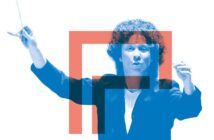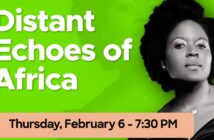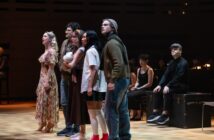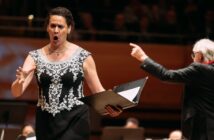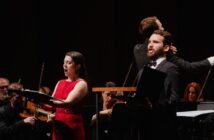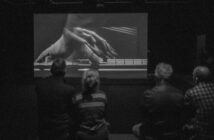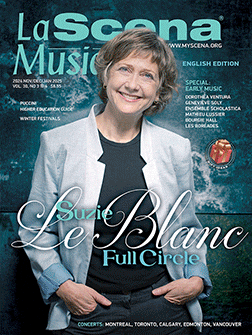PARIS – Ever seen a conductor cry on stage? I mean, other than Leonard Bernstein?
We can add to this exclusive list the name of Yannick Nézet-Séguin, who was seen wiping his eyes discreetly on Sunday after Elgar’s Enigma Variations, a performance that marked the official conclusion of a six-city, seven-concert European tour by the Orchestre Métropolitain.
There would be an encore: Ravel’s Pavane pour une infante défunte, done in the supplest tones imaginable. We must resist the temptation to deem the last thing heard as the best. But goodness, what a sound.
And what an ovation from the Parisians, who packed both concerts, which was given in connection with a “Week-end Montréal” (as it was styled in the program) and next door to the “Le Québec à la Villette” festival (La Villette being the former meat-packing district where the curvy and hypermodern Philharmonie concert hall was opened in 2015).
All of which makes it rather curious that the Phiharmonie de Paris did not see fit to include a composition from Quebec as part of either program. Every hall in Germany and Holland agreed to a made-in-Canada starter. Nézet-Séguin managed to sneak in the last few minutes of Eric Champagne’s Exil intérieur as an encore on Saturday, which means it was part of the Mezzo Live HD and Radio Classique broadcasts.
Nézet-Séguin called the Parisians “nos cousins” in a heartfelt address from the stage on Sunday. The night before he drew attention to the presence of Elgar on the program (the Cello Concerto with Stéphane Tétreault) as an expression of Canada’s British heritage. As in the music making, the diplomatic balance was exact.
The tour, of course, was about the universal language and how well this orchestra speaks it. Performing was at a high level from start to finish. Contralto Marie-Nicole Lemieux, very much a singing actress, gave her most inspired performance of Berlioz’s Les nuits d’été in front of a crowd that actually understood the words.
Not that comprehension prevented a good deal of coughing between songs, which in turn provoked much shushing from the conservatives in the audience and even a shout of “Silence!” after Le spectre de la rose. Maybe all that talk of “mon tombeau” puts some people in an uneasy mood.
Still, they gave Lemieux a hearty cheer and responded no less enthusiastically to the leonine Jean-Guihen Queyras in Saint-Saëns’s Cello Concerto No. 1. This Montreal-born Frenchman, speaking from the stage, made reference to his Quebec roots and the emotions evoked by the tour before playing Henri Dutilleux’s elliptical Trois Strophes sur le nom de Paul Sacher as a solo encore.
Elgar’s distinctly non-French Enigma Variations went as well as ever. It is measure of the expressive flexibility of the orchestra that each performance sheds extra light on one variation or other. This time I was especially taken by the charm of the Allegretto that precedes Nimrod.
The highlight on Saturday was Tétreault’s Elgar, delivered as always with deep expression and speaking tone. Varied phrasing in the finale offered a microcosm of what makes this 24-year-old so special. People in southern Ontario can hear him play the Elgar (at this point his signature tune) with the Kitchener-Waterloo Symphony on Jan. 12 or 13 with the young Taiwanese conductor Tung-Chieh Chuang.
OK, back to Paris. Alexandre Tharaud was not the ideal interpreter of Ravel’s Concerto for the Left Hand but he produced a confident cadenza on Saturday (and got enough applause to give a left-hand prelude by Scriabin as an encore). The orchestral buildup from the lower depths was evocative. As a platform for the OM itself this concerto was an excellent choice.
As was Debussy’s La Mer, even if the Saturday account (preserved for posterity by Mezzo) was more rigid and less pictorial in the first movement than it had been in Cologne and Amsterdam. I wonder if the long pause YNS decreed before the start put the musicians in mind of all those cameras. Happily, the performance set sail in the second movement and Nézet-Séguin in the finale demonstrated again his penchant for creating irresistible momentum.
The tour was a success on every level. Audiences were charmed by the newcomers. Playing standards were high. Above all the tour was an apotheosis for an ensemble that has long done yeoman’s work in the suburbs of Montreal and the pit of Salle Wilfrid Pelletier. These musicians could cross the ocean and sound every inch an orchestra that belonged in the best halls in Europe.
That Nézet-Séguin dispensed with his baton so often said something about both the intimacy of his bond with the OM and the likelihood of its permanence. Possibly his relatively modest workload in Montreal – starting in 2020 he will juggle the OM with the Metropolitan Opera as well as the Philadelphia Orchestra – is part of the happy equation. YNS is the ultimate known commodity but also an international creative force whose every arrival seems special.
“There is a real camaraderie in this orchestra,” said trombonist Michael Wilson, one of a few founding members of the 37-year-old OM, at a post-tour celebration. “There are no feuds, no butting heads. And Yannick is part of this. He is a genuinely warm human being.”
Wilson probably speaks for all in feeling a combination of gratitude and astonishment that the orchestra that began as an ensemble dedicated to the island of Montreal now has a European tour and a cycle of Bruckner Symphonies behind it.
The moral of the story? “If you hang around long enough, good things happen.”
And the winner is
A matter of opinion. All six concert halls on this tour were of high quality, although a touch of hardness might put De Doelen in Rotterdam, a 1966 facility with a vast interior, at the bottom of the standings.
Principal clarinet Simon Aldrich gives top honours to the Amsterdam Concertgebouw of 1888. “There is a bloom there that you do not find in the other halls.,” he said, while admitting that the prestige of the place is hard to factor out of any subjective judgment.
His No. 2 was the Paris Philharmonie – said to be Nézet-Séguin’s favourite – followed closely by its namesake in Hamburg, opened early this year. I would reverse that order while keeping them close. One could very well propose a three-way tie with the Dortmund Konzerthaus (2002). The Cologne Philharmonie (1988) is very good if you are not sitting too close. Anyway, a game of inches.
Teamwork
Tightly organized with only one free day in the midst of a seven-concert schedule, the tour was relatively snafu-free. One foot injury in the second violins and one passport left in an instrument case were not too hard to resolve.
“I’m very proud of my team,” said Jean Dupré, the orchestra’s CEO, who made his debut at the Paris Philharmonie (specifically, the Grande salle Pierre Boulez) by giving a bouquet to the maestro, which YNS held aloft like an Olympic torch.
It was a gesture the former head of the Canadian Olympic Committee could appreciate. “If you get all the basics right,” Dupré added, “you make it possible for people to do their best.”
Public profile
The Hamburg public was the dressiest by far and demographically the most diverse. It was presumably the younger patrons who were clapping between songs in Les nuits d’été and their elders who were shushing them.
Elsewhere in Germany and Holland, hair inclined to grey and white (disregarding the dye jobs). There was a good mix in Paris, of formal folks and scarf-wearing arty types who look like they smoke Gauloises even if they in fact abstain. In both Hamburg and Paris the new facilities have created a surge of public interest.
VIP watch
Former Quebec premier Jean Charest was present on Saturday. On Sunday, the French-trained American pianist Nicholas Angelich was seated in the row in front of me.
www.orchestremetropolitain.com
Read also:







